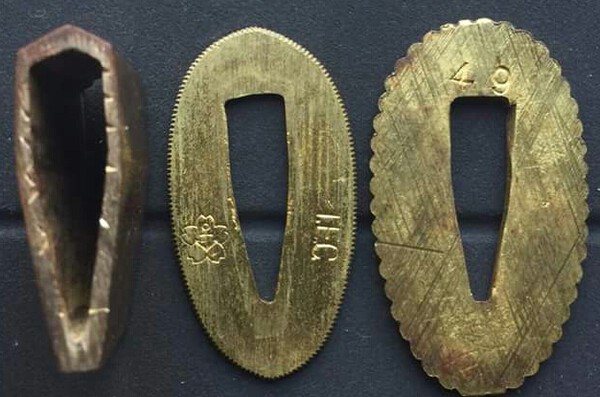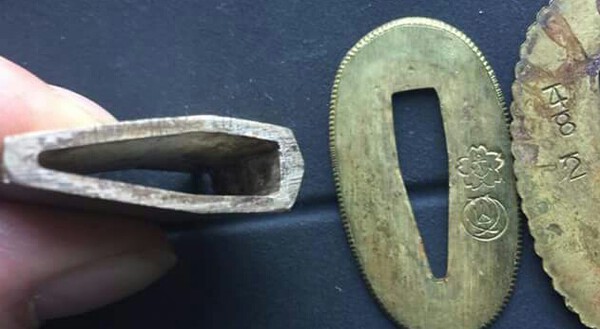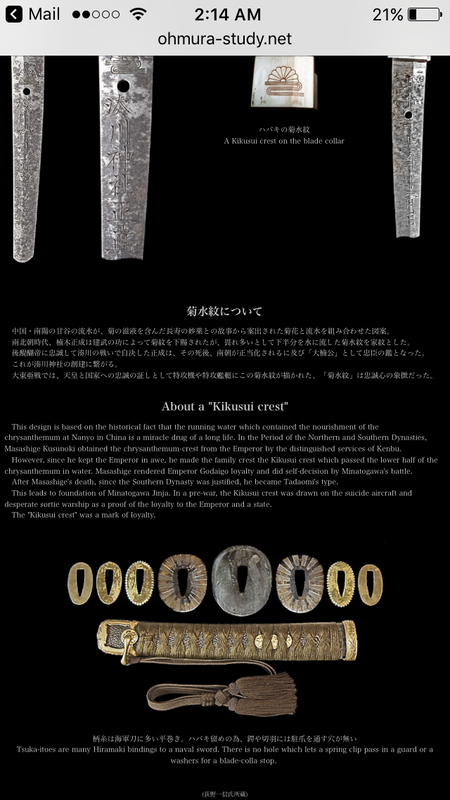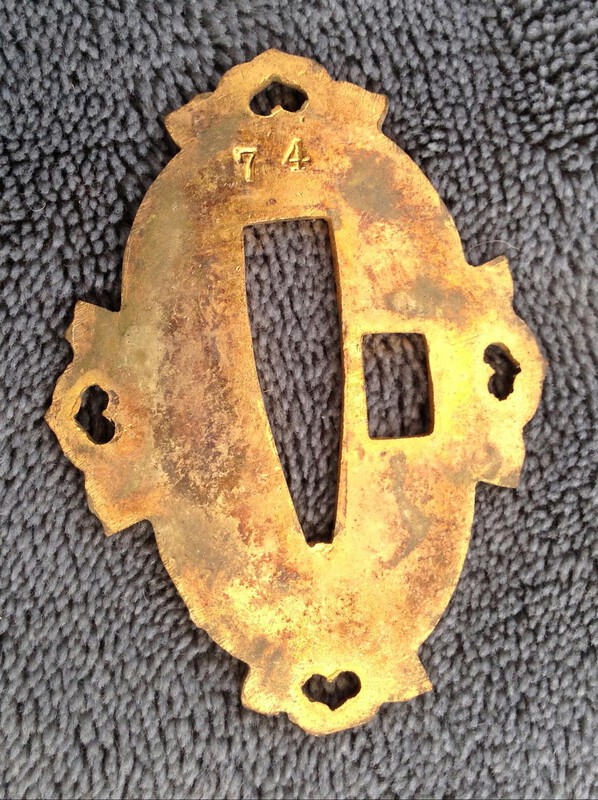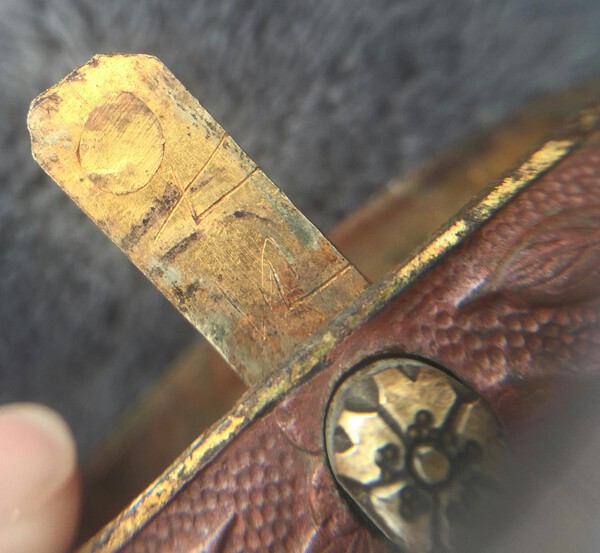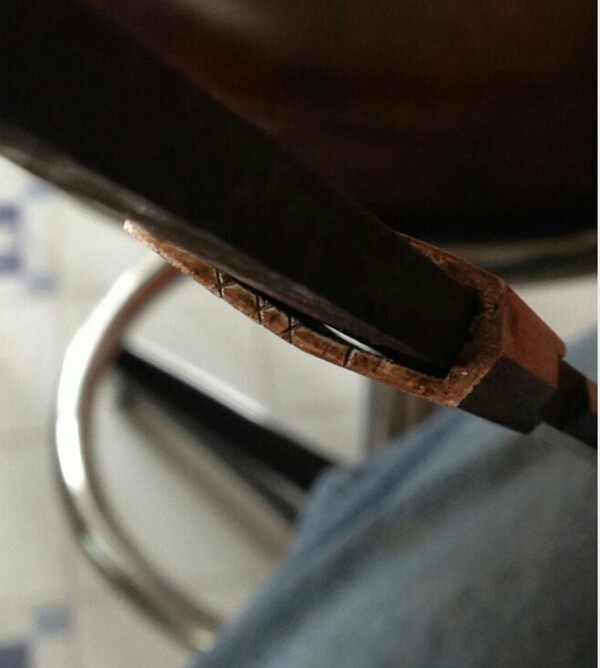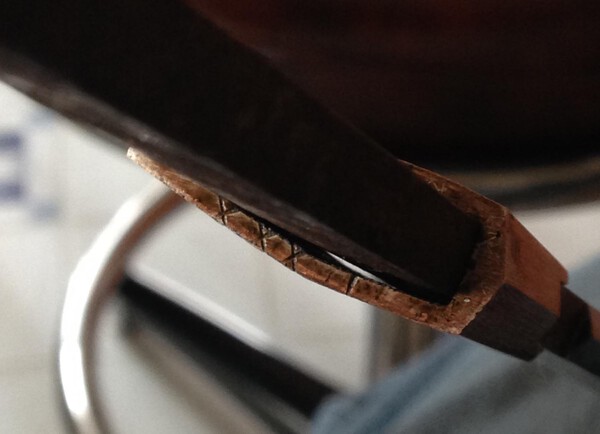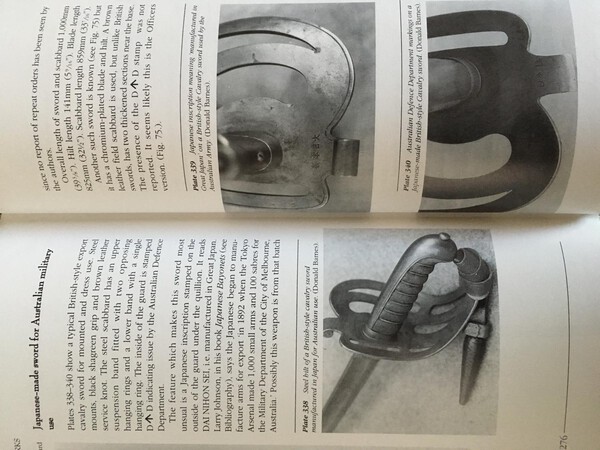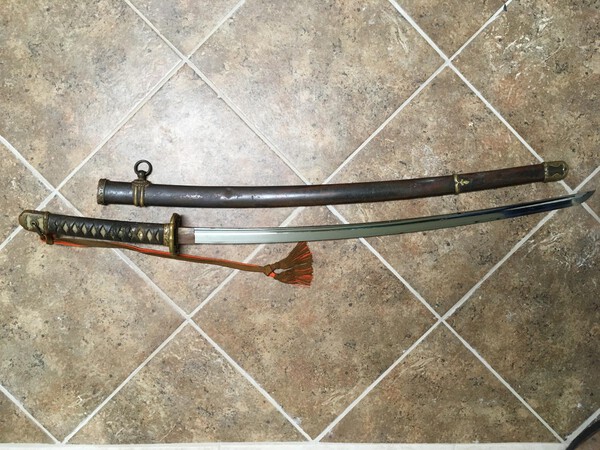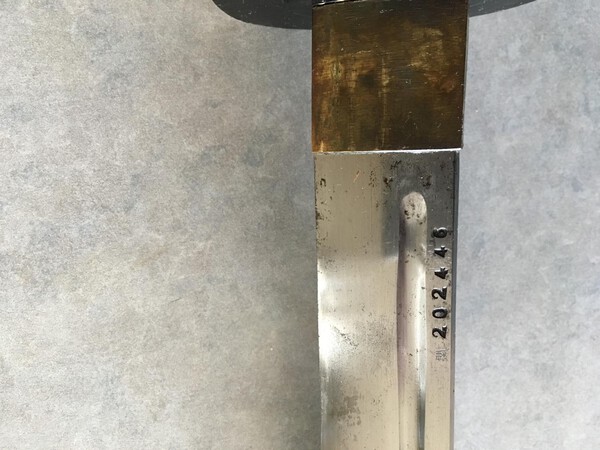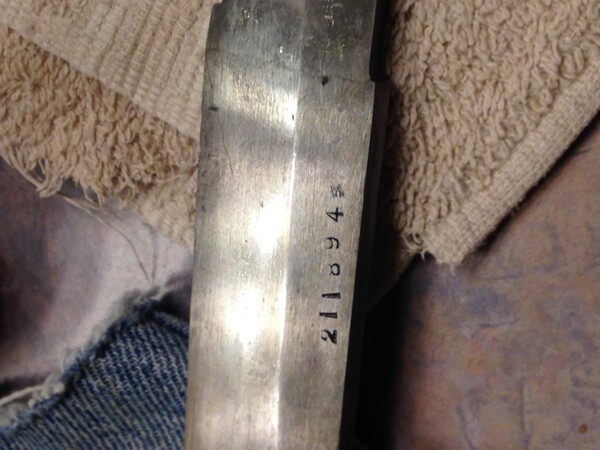-
Posts
13,315 -
Joined
-
Last visited
-
Days Won
159
Content Type
Profiles
Forums
Events
Store
Downloads
Gallery
Everything posted by Bruce Pennington
-
Wow Steve, how wild that they filed the number on the nakago jiri!!! And the 8 doesn't bother me since it means the gunto was assembled by the at the same place making these marks. Speaking of "place" - major lead in chacing down the organization, coming from Thomas Appel Nillson at the Military Swords of Imperial Japan (Shin Gunto) on facebook! He's posted pics using the same numbering system, from 2 swords. Both are kaigunto and have the Toyokowa Navy Aresenal stamp, but differing contractor stamps on the seppa (T.E.C and a new one - Gunto Sei Saku Jo). Considering my example is also Navy, I'm starting to think that it is the Aresenal using this method as they assemble the parts to the blade. The confusing thing right now, though, is YOURS which is Army! This could simply mean the practice was not isolated to a single arsenal. Hopefully more to come! ps: the hash marks are hard to see on the first one, but they are there
-

Kai Gunto - Just Sharing Excitement
Bruce Pennington replied to Erwin's topic in Military Swords of Japan
The standard ones were, but there was an upgrade that was gold/brass. Here's a pic from Ohmura's site: http://ohmura-study.net/732.html -

Kai Gunto - Just Sharing Excitement
Bruce Pennington replied to Erwin's topic in Military Swords of Japan
Erwin, it's a beauty, and I've always loved the brass rising sun seppa too! -

Kai Gunto - Just Sharing Excitement
Bruce Pennington replied to Erwin's topic in Military Swords of Japan
Erwin, The Seki stamp says that it's not traditionally made. I don't like the term "machine made" because officer swords were made buy people. Some used hydraulic hammers instead of apprentices slinging sledgehammers. The NCO gunto used the highest amount of mechanization. -
Steve, I was actually looking for even ANOTHER thread where a guy was specifically asking for help with his roman markings, but I couldn't find it, and I had missed your post on that too! So, I REALLY LIKE your thread on the Parade/Dress sword and would rather leave it as is. Tacking on a discussion like this would be a "hyjack" and turn the discussion away from your investigation. I think it also makes re-finding old subjects harder when they are imbedded in threads of another topic. Would you mind if I copy your pics and add them? I sort-of hate to do it, though, because from the pics you've posted it looks like your markings on the nakaga are "IIII I/" which makes our mystery complicated again!
-
A while back, I discovered what seemed to be Roman Numerals on the edge of a habaki on my kaigunto with a Shinto blade. The "XXX I" matched the "31" on the seppa. But later, someone showed up with a similar habaki marked with "I I I I", and we all know that "IV" is Roman for 4. (BTW, if the guy with this habaki reads this PLEASE let me know, I'd love to post the pics!) So, a bit of mystery. UNTIL NOW! Dave (Pet Dragon) has recently posted a Type 94 with fittings, and nakago marked with "/II IIII" and "74" on the seppa. The latch had "七 IIII". When I showed my habaki to Dave, he realized the "/" was HALF of "X"! Whoever made these fittings modified the Roman Numeral system (or just didn't know it well enough) and was marking the items with their own system. I'd appreciate it if anyone else has fittings marked in this manner to post them. What I would really like to see is some company identification on the fittings that would tie this numbering system to a company.
-

Help With Sword Identification
Bruce Pennington replied to rjhancock's topic in Military Swords of Japan
That's an Otsu alright. Non-matching number s isn't unusual, You're lucky its in a model 32 scabbard! My Otsu is in a model 19 scabbard - which is totally wrong! Of the 500,000 swords collected at the end of the war, many were not in scabbards at all and G.I.s would simply grab one to fit the blade they had. I also wonder whether, over the span of 3 wars that some of the swords served in, if a trooper might have taken damage to a scabbard and, in the field, replaced it with whatever was at hand. We will never know. But what we DO know is that both peices were genuine Japanese war weapons. -

Help With Sword Identification
Bruce Pennington replied to rjhancock's topic in Military Swords of Japan
Richard, you have a 1899 pattern, or Model 32, NCO sabre. The center stamp is of the Tokyo Army Artillery arsenal, the rest are believed to be inspector stamps. There were two versions, the "Ko" was longer at 39" and the "Otsu" was shorter at 36". The Ko was carried by cavalry and the Otsu was for artillery and others on foot. They made them from 1899 to 1936, but were carried throughout WWII. -

Help With Identification / Translation
Bruce Pennington replied to Pet Dragon's topic in Military Swords of Japan
Dave, it was on the habaki of an old Koto blade fitted as a navy gunto. The seemingly Roman numerals "XXX I" match the "31" on the seppa. -

Help With Identification / Translation
Bruce Pennington replied to Pet Dragon's topic in Military Swords of Japan
Dave, it does look like a Type 94 Shingunto. The lower ashi should be removable. The upper is not. The paint on the nakago matches the hash marks on the edge of the habaki and are factory assembly marks. I have a navy gunto with similar hash marks in the habaki. I'll have to see if they match the marks on the nakago! The marks on the chuso are upside down in your picture, if you flip it, you can see they are a Japanese "7" and 4 hashmarks, matching the rest of the marks on the gunto. Nice gunto! Interesting to see the short kissaki. -
Ian, it's on pgs 276,277 and is not the Type 32 style (which would have been my guess too! He said they made 100 sabres for "Military Department of the City of Melbourne, Australia."
-
Yes, September 1943. Can't speak on the smith name.
-
That's a new one on me Frederick! Can you tell if the fittings were placed over the lacquer/paint? Or is the paint done around the fittings? I can't imagine anyone in their right mind doing that, whether Japanese or post-war, unless the same' was so terribly damaged that they decided to recover the saya with lacquer/paint.
-

Chromed And Fullered Type 98
Bruce Pennington replied to Bruce Pennington's topic in Military Swords of Japan
Update: Picked up a sarute and Field grade tassel. Now it REALLY looks like the one in Dawson's book! -

How To Destroy A Good Sword
Bruce Pennington replied to bobbernard's topic in Military Swords of Japan
Looks like the end of Type 95 NCO gunto! Like Allen said, if the gunto was really damaged, maybe he "made lemonade out of a lemon!" I hope he didn't just butcher a good gunto though! -

Nlf Gunto Discussion
Bruce Pennington replied to Bruce Pennington's topic in Military Swords of Japan
Dave, haven't seen THAT before! Whoever did it, put a concerted effort into this. There are a LOT of these out there and have less variation that standard IJA and IJN gunto. Maybe that fact alone hints at post-war. -

Help To Identify Officer's Sword
Bruce Pennington replied to bobbernard's topic in Military Swords of Japan
No, I can see it quite well. In fact you should invest in some high quality leather cream as the retainer strap is already cracking. You should try to preserve it! I agree with Mr "Death-Ace" Hudson and have seen several Waki blades in larger than expected fittings. Heck into the smith for history of the blade, but otherwise you've got quite a beautiful piece there! -

Help To Identify Officer's Sword
Bruce Pennington replied to bobbernard's topic in Military Swords of Japan
Looks like Stephen got the smith - KuniShige. I don't know smiths, but this looks like an old blade. I don't see why it couldn't have been refitted in the WWII koshirae, though, Steve. Admittedly the saya is immaculate, but I have a couple of Type 95's that must have been carried by an admin clerk or finance Sgt during the war, because they are immaculate too. Bob, is the saya laquered wood with a leather tip?!?! If so, that would be very peculiar. Also, I would like to see what an original IJA leather snap looked like to see if this one is a replacement. UPDATE: I just perused Ohmura's examples and it looks like there were as many variations of retention snap/buckle as you might imagine. -
Soooooo ...... I'm hearing you say "It's complicated."! Dang Seriously, thanks for (I was going to say "clearing that up for me") the info Steve. This one of mine, came from the Seki Token Co., who might have been given, say 2,000 numbers, and it might have taken them 4 years or so to put those on the street?
-
I have a Nagoya side-latch, aluminum handled Type 95, numbered Seki 202446. I also have a wooden handled "late war" 95, numbered 211894 seki. I have understood that the arsenals were given serial number blocks, and that the Nagoya arsenal had the 200,000 range. So my aluminum gunto, being 202,xxx, must have been made "early" in the production series. I've always assumed the assignment of these number blocks came early in the war, like right after the copper-handled NCOs, so 1938/1939. But these factories were cranking out around 8,000 blades per year EACH, so with the wooden-handled blade at 211,xxx, that would only take barely over a year to move from the aluminum tsuka to the wooden one. This seems to indicate that the block assignment of numbers came, maybe AFTER Kokura Arsenal divided the 95 production to Nagoya and Tokyo 1st? Which puts the start of the production of the 200,000 series no earlier that 1940/1941? That would STILL put the wooden tsukas in production by 1942 vs the standard '44 and '45 timeframes we talk about. Any help Stegel & Shamsy???


